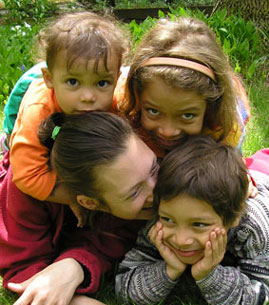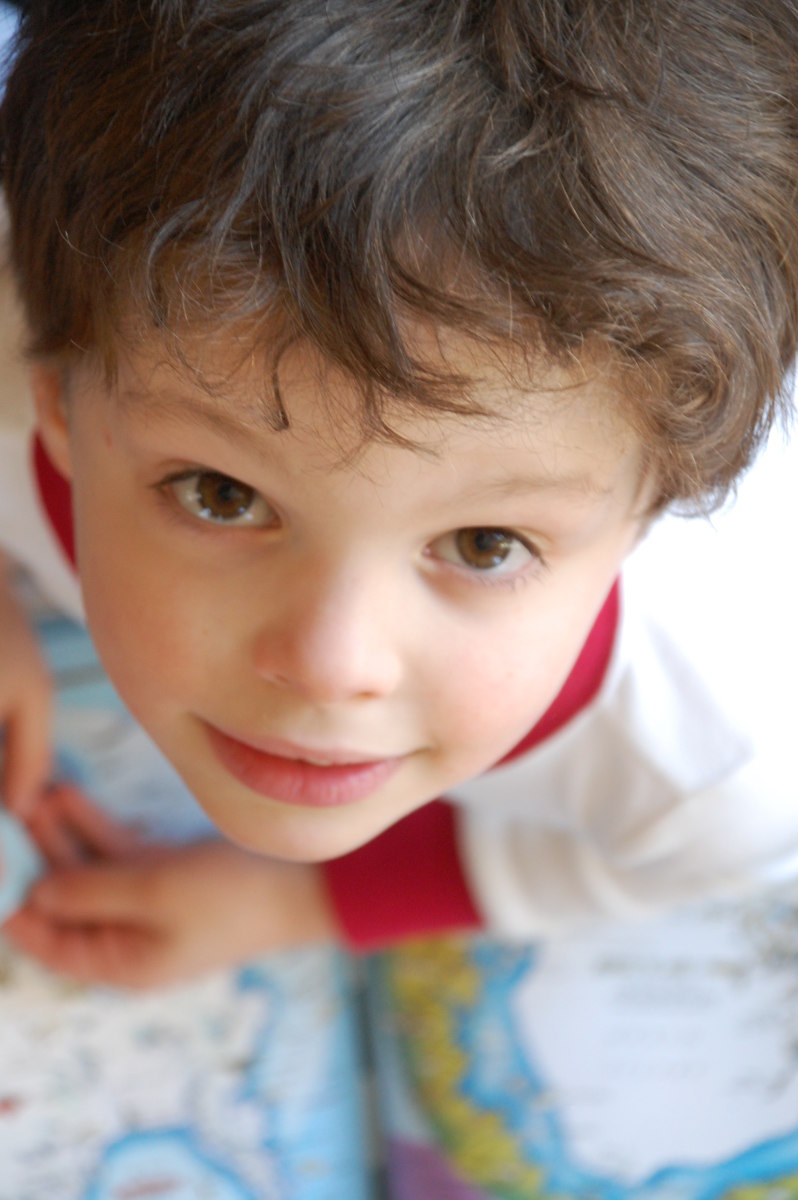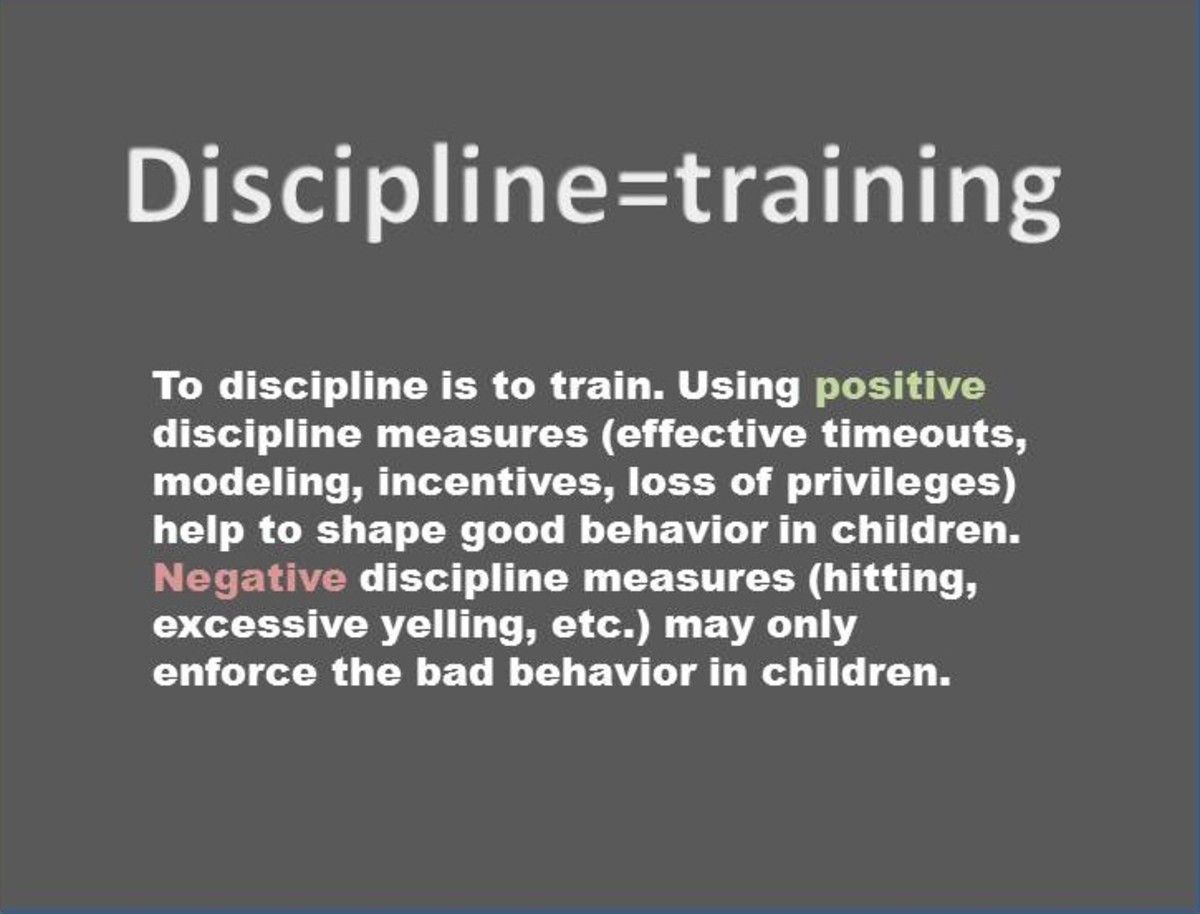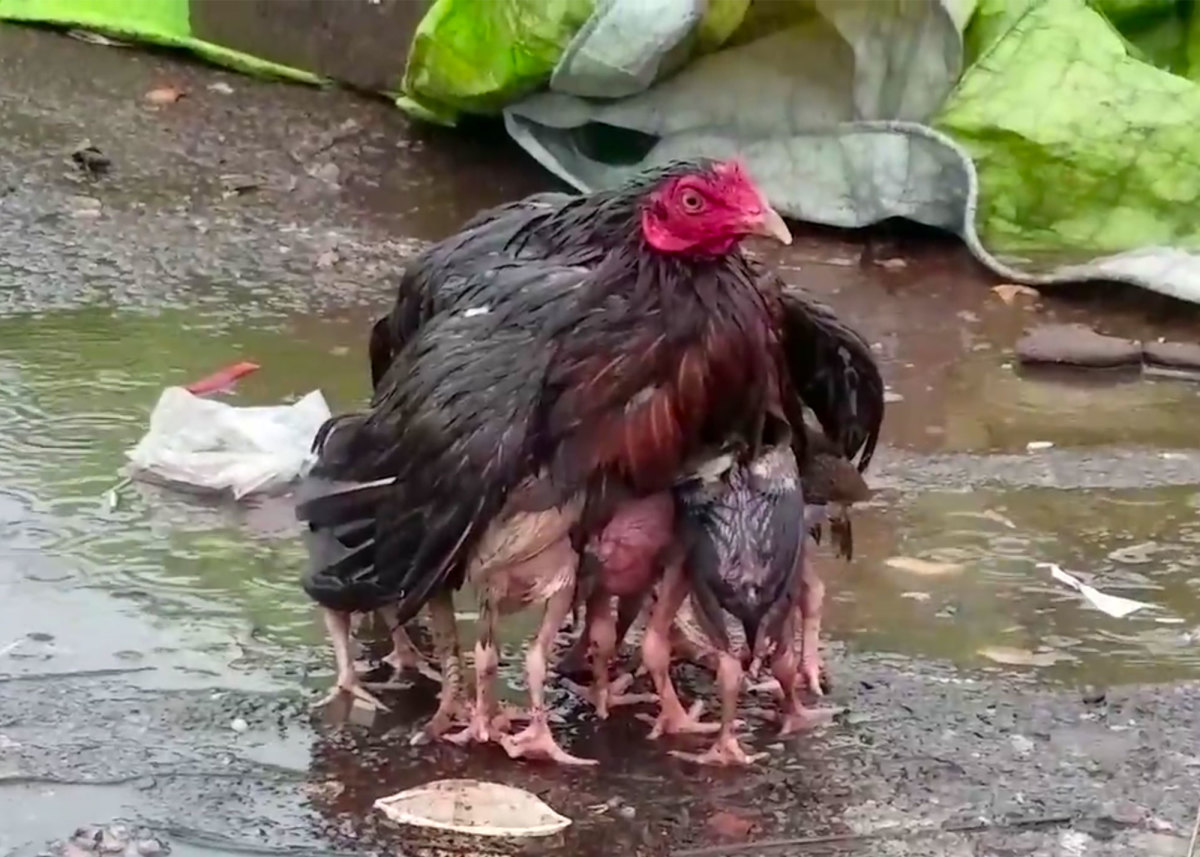The Truth About Bad Behavior and The Innate Nature of Children

The children of today's world arguably present new and interesting challenges in comparison with the children of decades past. Parents sometimes find they are more argumentative, disrespectful, as well as violent.
The media and medical industries have both propagated the perceived negativity and there are some who just throw their hands up in despair. "What is happening with our youth?" they cry. Rooted in dreams of the planet's children becoming happy, successful members of society, the concerns are valid, to say the least.
Yet the smallest child is not that different, if any, from humans who were born at the beginning of humanity. So what is the cause of this significant change in human behavior? And what can we do about it?

Infant Initiation of First Feeding
The Very Beginning
What we do know about babies is that they generally start out as innocent little bundles of joy. While new parents who are not used to sleeping odd hours and caring for another person 24/7 may not quite relate to this fact all of the time, it is commonly believed that babies are just wonderful. They are cuddly, smell good, fun to hold and play with.
The most scrutinizing adult can be transformed easily through the pure love that emanates from an infant. One of the most common questions a new mother will hear is, "Oh, can I hold the baby?" as hands outreach to soak up the goodness that lies within. What is the source of this something that everyone loves about babies?
From a physiological standpoint, newborn babies possess an innate survival mechanism, as demonstrated in the Infant Inititation of First Feeding video to the right. When placed between the mother's breasts, an infant will squirm, kick, salivate, and gravitate towards the nipple, eventually latching on for its first suckling in nature's process for sustenance which has been termed the breast crawl.
This simple act of allowing baby to initiate breastfeeding encompasses many components which assist the mother and baby in realizing the true guided nature of our being. While the infant kicks and squirms, the mother's womb is stimulated to contract and help release the placenta. The baby's placement on the mother's chest keeps it warm and begins the process of bonding outside of the womb, near her heart where familiar sounds are heard. As the baby smells the food source, it salivates and wiggles closer, eventually building up the momentum to latch on and receive its first feeding from mother's breast, completely unassisted other than the placement of the baby on the mother's chest.
The significance of the breast crawl demonstrates the fact that humans are born with an instinctive ability to not only survive, but thrive. On a purely physical level, it is obvious that something innately in touch with well-being is at work.
This ability to sense what it needs does not leave the baby after the first feeding, but stays with it to protect and give guidance throughout life. However, it is often misunderstood. Parents, people who work with children, and anyone else concerned will benefit from knowing how this ability is playing out in the lives of children today. It is truly the key to creating more harmonious relationships with children and within families.

Is The Baby Bad or Good?
The next most common question asked of parents is often, "Is she a good baby?" The answer generally being determined by one or all of the following factors:
- Parent's quality and quantity of sleep the night before
- Parent's beliefs about the nature and behavior of their child
- Questioner's look on their face
While it may seem pointless to point this question out, it relates to the whole picture being weaved here to demonstrate the true innate nature of children.

The Inner Compass
Babies, just like adults who started out that way, are born with something termed by Abraham-Hicks as an Emotional Guidance System. Other terms for the same quality include intuition, gut feeling, survival mechanism, and inner compass.
It works like this. Babies sense their surroundings through vibration as everything is vibrational. Readers likely recall this from science class. Even though you're looking at what appears to be a solid computer screen in front of you, it is in fact vibrating.
From a very basic stand point, babies know intuitively that in a broad sense they are safe and come from well-being. However, they pick up on the fact that not everyone feels the same, possibly even while in the womb of their own mother.
Similar to any guidance system we use on our planet, the small child's own inner compass directs them to and away from experiences through the sense of emotion. This may be best explained through several examples.

The Value of a Parent's Beliefs
To demonstrate the multi-faceted nature of a child's inner guidance, three common situations will highlight it in different ways which compliment each other.
Most parents are familiar with the baby who feels very safe with Mom or Dad, yet isn't so sure about the overbearing passerby or family member. While a parent may know that the person just wants to share a little love with the baby, something else is at work within the baby's sense of what feels right to him or her.
Similarly, parents generally would like their children to trust any gut feeling that may lead to a "fight or flight" response while in danger. If a person comes about trying to harm them in a sly manner, parents surely want the child to pick up on the subtle nature and get help.
Yet, it is often the same parents who may sometimes use control tactics to get cooperation from their children. Since these measures can come from a frustrated or angry place within the parent, a child resists because the tone fueling the situation does not feel good. The parent wants the child to do what is asked of them, but the child does not want to associate with the negative feeling the parent is giving off, similar to the energy in the situation related above involving a not-so-well meaning someone.
Children are born with a knowing that they are of value, that they want to be here, that they have amazing potential, and that they are learning all there is to learn about in this world full of possibilities. When this knowledge is challenged, resistance is created, and behaviors of all sorts have the potential of popping up.

How We Challenge Our Offspring
From day one many babies are not trusted. Some parents may read and think it absolutely absurd to place trust with such a tiny little thing who is so obviously dependent on another for life. At the same time, the breast crawl video above clearly demonstrates the fact that even tiny infants have an inborn desire to live and prosper.
As babies are approaching the points of exploration in life, around 6-9 months, the first word that they start to hear very often is, "No". Even the parent who wants to allow some healthy exploration may feel very protective, uncomfortable, and understandably would like to set some limits on what the curious baby can and cannot do.
While this seems reasonable and safety and well-being are very important, the place this originates from within the parent is what largely determines the result he or she will get with the child. Little ones feel what parents and other caregivers are saying more than the words themselves. If the underlying feeling is, "You are inconveniencing me" or "What you are doing is causing me frustration" or "I am afraid something bad will happen" the child feels this and reacts in an unfavorable manner because at the deepest level he or she understands that this is not the truth. Going back to what children innately know upon creation about their own self-worth, when others tell or relate to them otherwise the child either resists or takes on the belief.
In many ways, we challenge the idea that the life of our children will unfold in the way it needs to without very direct, even forceful influence and control. Is this article suggesting the parental role is null and void? No. It is suggesting that we may benefit from redefining our role a bit to more largely include a positive perspective when it comes to parenting our children.

The Tendency Towards Negativity
Children are also encouraged to not fully feel the emotions that come up alerting them to something that does not mesh with their basic knowing of self-worth. Emotion is created to allow the child to take notice that they are off their path of truth. This truth is a constant for all at birth and is only swayed by life experience.
Generally, unexpressed emotions collect into what Eckhart Tolle refers to as a pain body. Simply put, this is a tendency towards negativity. If one watches his or her thoughts there is no doubt that most people will notice a tendency to go towards the negative. It is common in our media to focus on what is going wrong and it follows that many of the planet's inhabitants do the same. However, it is possible to flip this around because we are also born with the option of choice.
The importance in recognizing this and choosing to pivot towards looking for what is positive is the light that will inevitably begin to shine brighter and brighter in one's experience. To start, it is helpful to know the full value and purpose of emotions.

The Real Deal on Emotions and Resulting Behaviors
The true value of emotions or feelings is to let us know we are thinking or feeling something that is not in line with what we know to be true about our essential nature. This is the same for pre-verbal children on up through the eldest of adults. It is a human guidance function.
We are loving, and accepting at our core. Our children are as well. That starts with self-love which initially displays as a need to survive and thrive in infanthood.
When children (or adults) feel in conflict with this truth (which many adults have lost complete touch with), behaviors will arise in opposition to it.
For children, this can be a combination of either mirroring back the feeling that the parent or other care giver has just displayed, or it can be a build up of negativity within the child that is being projected when their innate nature is challenged. Either way, as the Martin Luther King Jr. quote says, "Hate cannot drive out hate, only Love can do that."

The Steps We Can Take
As the ones who can do something to encourage children's innate nature and belief of self-worth, all adults can take steps to make a difference. It may come as a surprise, but the journey really starts within, rather than in specific ways to control children.
There is no doubt that modeling is the most pertinent way children learn how to deal with life. The old adage, "Do what I say, not what I do" does not work. Love does. Start with yourself. You will come to realize that the innate nature of children expands to include adults as well.
- Begin to look at how you think about things in life, especially the behavior of others. Do you find that much of your time is spent on negative thoughts or thinking that someone else has infringed upon you or your life? Consider finding ways to look at your experiences in a more positive nature - what gifts could exist?
- Start choosing thoughts that bring relief, little by little. If you are thinking negatively, try finding a thought that feels a little better. It may just be catchy and you'll find yourself enjoying it a lot more!
- When you find yourself experiencing something you do not want, think about what opposite you do want. It is common to fall into the pain body trap. However, now that you clearly recognize it exists, you can pull yourself out. When you see it in others, you can silently acknowledge it and do what you need to do to feel safe, without angrily reacting and adding that type of energy to the situation.
- Feel what you feel. When you find yourself feeling angry, sad, or even joy, let yourself feel it. You might wonder how to go about that. It starts with breathing and not taking action as a result of the feeling (unless it is for safety). In all cases, the resisting of a feeling is much stronger than the actual feeling. If it feels heavy or constricting, you are resisting. Some tools to help you feel what you feel are private coaching, focusing, EFT.
- Listen to your feelings. Ask them what they are telling you. I know, no one wants to admittedly talk to him or herself, but you're doing it all day in your head. Do it in a way that can actually help you.
- Take action in a way that works for the good of all. This is an essential key. Some people may think going on what feels good is hedonism. Not so in this case. The key is thinking about the true good of all and uplifting one's self to also facilitate the upliftment of another. This can be tricky, get support.
- Know that through working on yourself the results will reverberate to the children of the world in a very positive way. As a parent, you are the main influence in your child's life. Pulling yourself up by the boot straps and making a change for the positive in your life will have an impact. One much greater than any damage previously done. As any other adult who relates to children, you matter just as much. Like David of 516Ads says, goodness needs to speak up!
- Use what you learn and experience with the children in your life. All of these steps apply to parenting as much as they do to life. Choose to encourage and nourish the innate nature that already exists and the negative emotions and resulting behaviors will melt away.
In addition, it can be beneficial to remember these two things (that children undoubtedly display as part of their innate nature):
- Reaching for joy will eventually bring it. Find things to do that you find fun. Look around for joy. Follow your bliss :o) It is available - make a commitment to experience it!
- We always have the present moment. Regardless of the past or future, we have right NOW. Make the most of the present moment and you are truly making the most of your life.
Presence Parenting
Amy Phoenix (aka Rainbow Recognizer) is a gentle, yet direct mom of five and facilitator of Presence Parenting, a space to choose the presence we bring to parenting, especially when we feel frustration, anger or rage. Visit her at www.presenceparenting.com.
Photo Credits
© 2008 RainbowRecognizer








